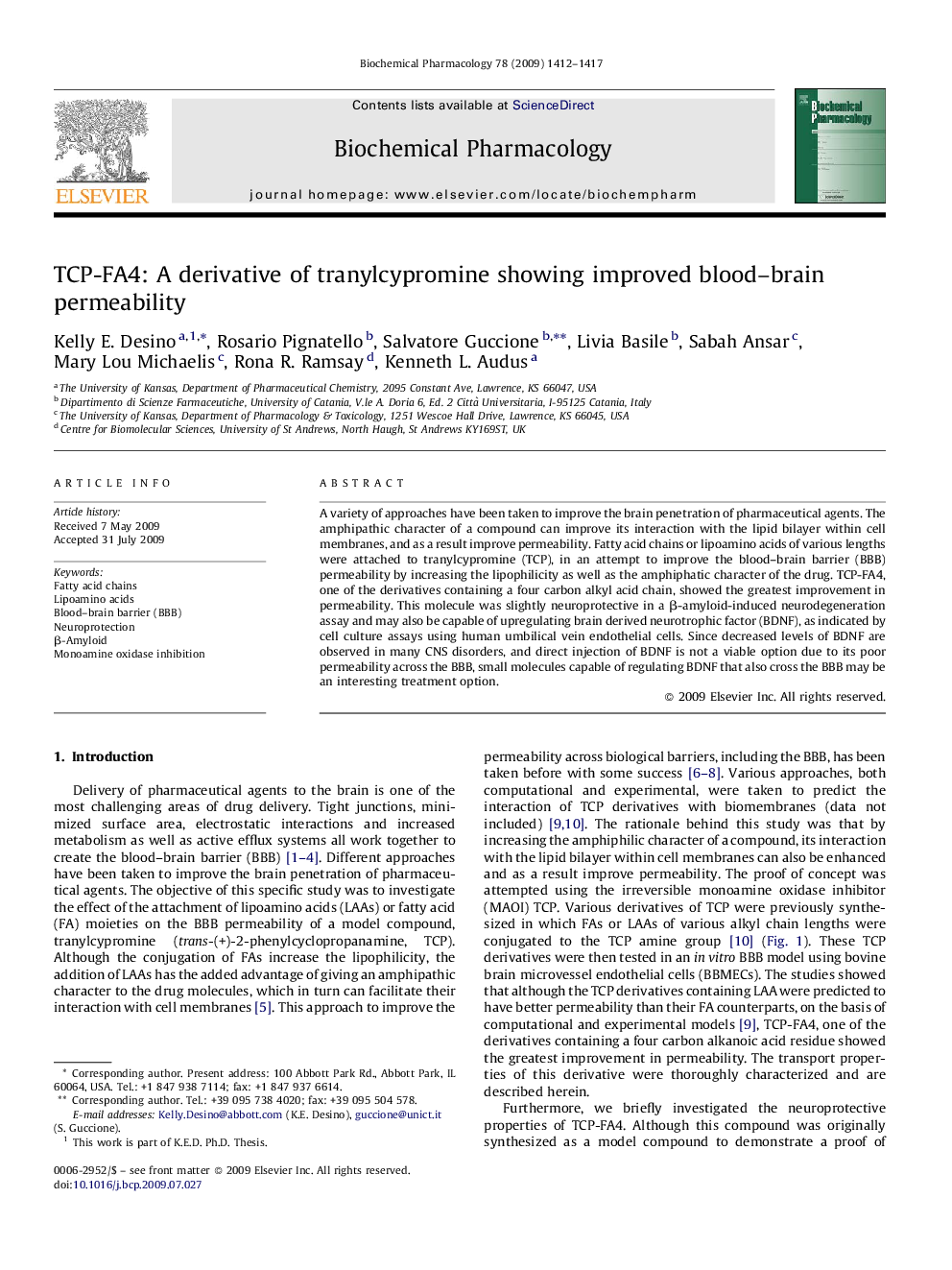| Article ID | Journal | Published Year | Pages | File Type |
|---|---|---|---|---|
| 2514579 | Biochemical Pharmacology | 2009 | 6 Pages |
A variety of approaches have been taken to improve the brain penetration of pharmaceutical agents. The amphipathic character of a compound can improve its interaction with the lipid bilayer within cell membranes, and as a result improve permeability. Fatty acid chains or lipoamino acids of various lengths were attached to tranylcypromine (TCP), in an attempt to improve the blood–brain barrier (BBB) permeability by increasing the lipophilicity as well as the amphiphatic character of the drug. TCP-FA4, one of the derivatives containing a four carbon alkyl acid chain, showed the greatest improvement in permeability. This molecule was slightly neuroprotective in a β-amyloid-induced neurodegeneration assay and may also be capable of upregulating brain derived neurotrophic factor (BDNF), as indicated by cell culture assays using human umbilical vein endothelial cells. Since decreased levels of BDNF are observed in many CNS disorders, and direct injection of BDNF is not a viable option due to its poor permeability across the BBB, small molecules capable of regulating BDNF that also cross the BBB may be an interesting treatment option.
Graphical abstractDerivatives of TCP containing FA or LAA moieties of varying side alkyl chain length were synthesized in an attempt to improve BBB permeability, by increasing the lipophilicity as well as amphiphatic character of the drug molecule. Results suggested that LAA promoieties containing medium to long side alkyl chains would be most useful in improving the permeability and membrane interaction of these compounds. TCP-FA4 may possess neuroprotective properties.Figure optionsDownload full-size imageDownload as PowerPoint slide
